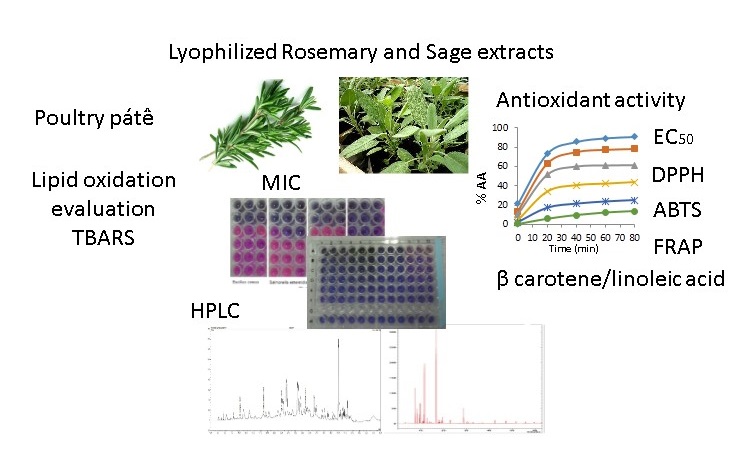This study aimed to evaluate the antioxidant activities (AA) of lyophilized rosemary extract and lyophilized sage extract and their effects on the oxidative stability of poultry pátê. For this purpose, four poultry pátê formulations with rosemary, sage, sodium erythorbate, and a control (without antioxidants) were produced. The rosemary and sage were characterized according to total phenolic compounds (TPC), and AA by several methods. The poultry pátês stored at 4°C were evaluated by the lipid oxidation. High concentrations of TPC were detected in rosemary extract and sage extract (46.48 and 41.61 mg GAE/g: Gallic acid equivalent respectively). The AA of rosemary and sage extracts by free radical-scavenging were 4745.72 and 2462.82 µmol Trolox/g, respectively. The high concentration of catechin, rutin, myricetin and p-coumaric acids in these extracts may be responsible for the strong inhibitory action against food pathogens. Besides these compounds can be responsible for the best performance in inhibiting lipid oxidation in poultry pátês during the storage. This study suggests that rosemary and sage extracts may be used as a natural antioxidant in meat products.

